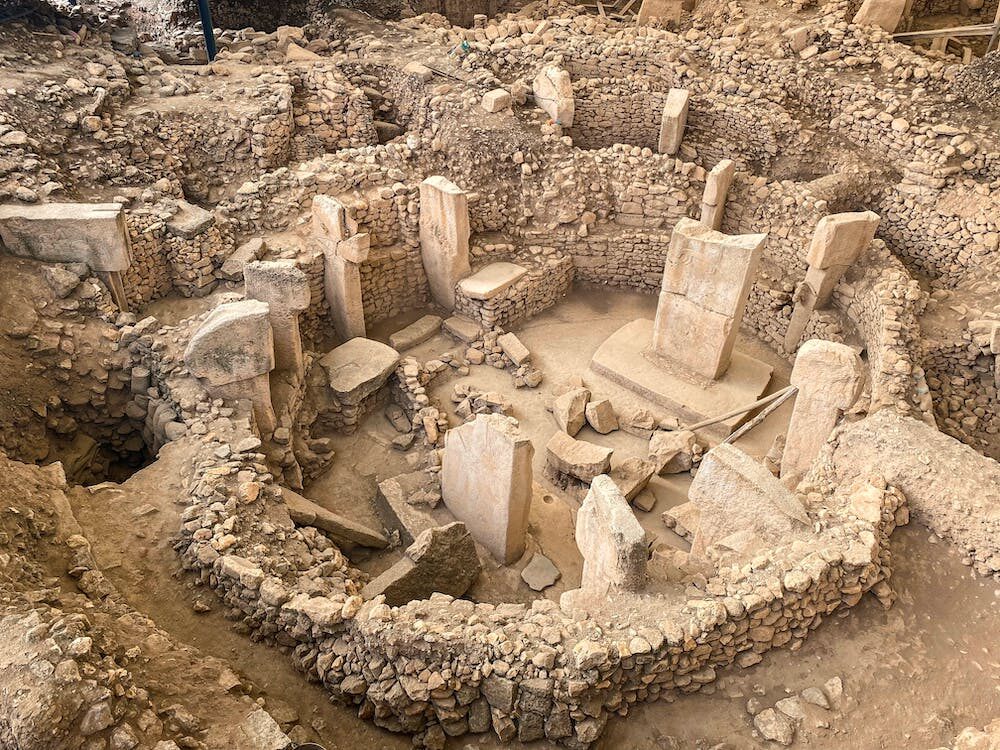
© PreHistory Decoded
The aim of science is simple. We aim to create consistent models of reality. If we can model everything perfectly (within the bounds of measurement uncertainty), i.e. explain everything, then there is no practical difference between our models and the truth. Ultimately, then, we seek the truth. Some scientist don't believe this, but this is how I see it. Religion used to be how this was achieved, but religions are not flexible enough to adapt to new information. They are too rigid. The advantage of science is that is infinitely adaptable; it changes to fit whatever the latest and best information is. Or, at least, it should (maybe even science has become too monolithic and politically motivated recently, with too much inertia in certain areas). Moreover, science uses mathematics and probability to find the most likely way forward; which explanation is most likely to be correct? Which brings us to Occam's razor.
Occam's razor is an excellent guide in developing our models. It says that if we have two models that can explain a specific set of observations equally well, the simpler one that requires least data to define it is more likely to be correct. A corollary is that if two models are equally simple, the one that can explain the most is more likely to be correct. Occam's razor is an intuitive guide. Although proofs have been attempted, to my knowledge none are completely satisfactory. It is the key scientific principle that guides me to consider the Younger Dryas impact hypothesis to be almost certainly correct, at least as far as the impact itself is concerned. The secondary effects, such as the Younger Dryas climate shift and associated megafaunal extinctions are more debatable, but still quite likely to be correct, in my view.
It is also how I approach decoding Gobekli Tepe and related symbolism. As a scientist, I am continually seeking connections, making links, simplifying explanations, using Occam's razor. There is considerable evidence now that many ancient cultures were fascinated by the sky, and their astronomical-symbolism was often linked and therefore likely derives from an earlier epoch.
Unfortunately, it seems that the possibility of
an ancient and widespread interest in astronomy is not welcomed by many archaeologists. And those archaeologists who do look up at the sky to study its effect on ancient cultures, the archaeoastronomers, are very few in number and often ignored by mainstream archaeologists (see
here). Possibly, this is because archaeologists generally prefer to find all their evidence in the ground. They have been trained since their undergraduate days to only look down, and not up. To my knowledge, archaeoastronomy never features in any undergraduate curriculum in any university anywhere in the world.
This is a real problem that is harming archaeology, because
evidence is growing, accelerated by sites like Gobekli Tepe, that in the ancient Old World, and perhaps the New World too, a widespread solar cult really existed. And it seems a new comet cult developed out of this ancient solar religion in the Fertile Crescent after the Younger Dryas impact, and this might have accelerated the rise of civilisation.Of course, science needs evidence, and perhaps the evidence has been lacking until recently to be convincing about this. While there is something in this argument, I think a lot more has to do with the
in-built biases of archaeologists, which begins with their training as undergraduates. They never study archaeoastronomy, and they are taught from the very beginning to be gradualists.
The possibility of ancient catastrophes delivered by the sky is a completely alien concept to most of them (literally).Even worse, archaeology has a historical problem with racism. As an academic discipline, it's history began with wealthy Westerners travelling the globe in search of ancient artefacts, which they often acquired/stole by mis-treating the local population. Modern archaeology is very sensitive to these past transgressions. It has resulted in a modern discipline that is very politically aware, and thus highly politically motivated. Sometimes, this is to the detriment of the scientific method. Politics and science should not mix. For example, you will likely have seen the bile aimed at Graham Hancock from a few raging archaeologists, which is then amplified by mainstream media.
These attacks are largely based on a political view, not science. For these people,
the possibility of an Ancient Apocalypse is not only to be scoffed at, it is politically dangerous and the idea must be defeated. Regardless of the evidence. Regardless of the science. Another casualty of cancel culture.Having said that, I disagree with Graham on the issue of an advanced ancient civilisation, except in the narrow area of good naked-eye astronomy. While a fledgling, sky-watching, stone-age civilisation (by 'civilisation' I mean it had settlements ~ 1000 people or more) able travel the oceans might have existed before the the Younger Dryas impact, and was then largely wiped out by it, I see no evidence of that yet. Certainly, I seen no evidence of an 'advanced' ancient civilisation before the YD impact. But I can respectfully disagree with Graham on this issue. There is no need for any kind of personal attack. Instead, let the scientific process go to work. And let's just acknowledge that Graham, and some others on the scientific and popular fringe, were almost certainly correct on the issue of an ancient apocalypse, which then influenced local religions and related symbolism for millennia afterwards. Symbolism we are now able to read, partly because of people like Graham.
As soon as you figure that one out you're argument will have more merit.